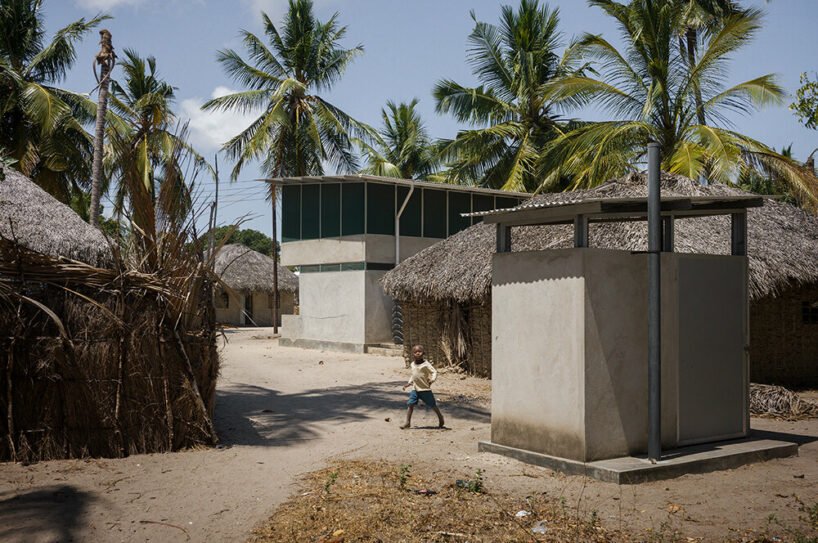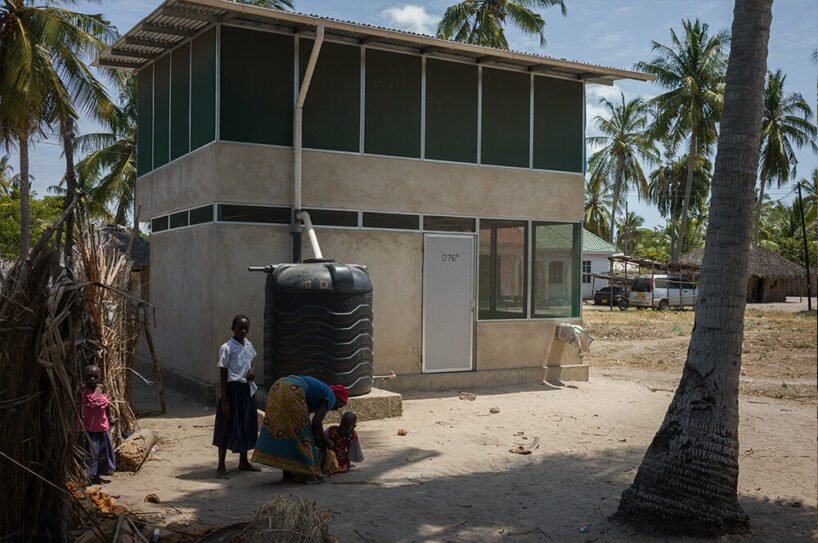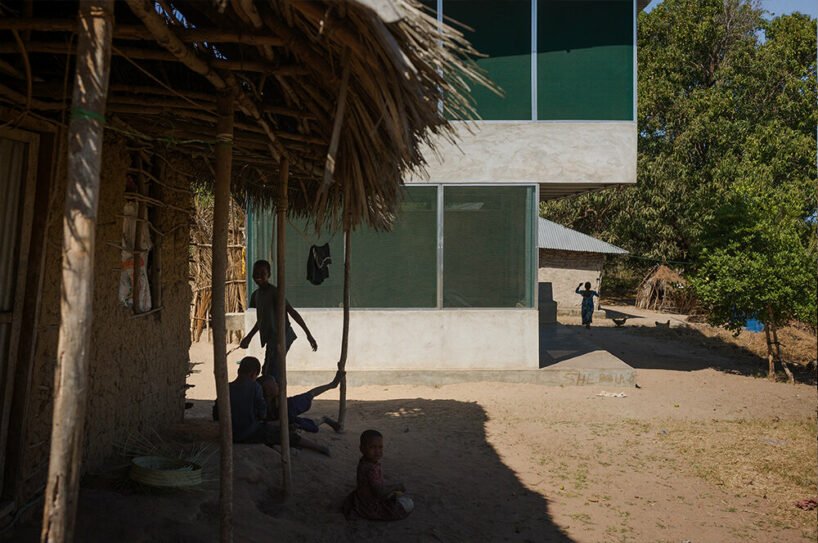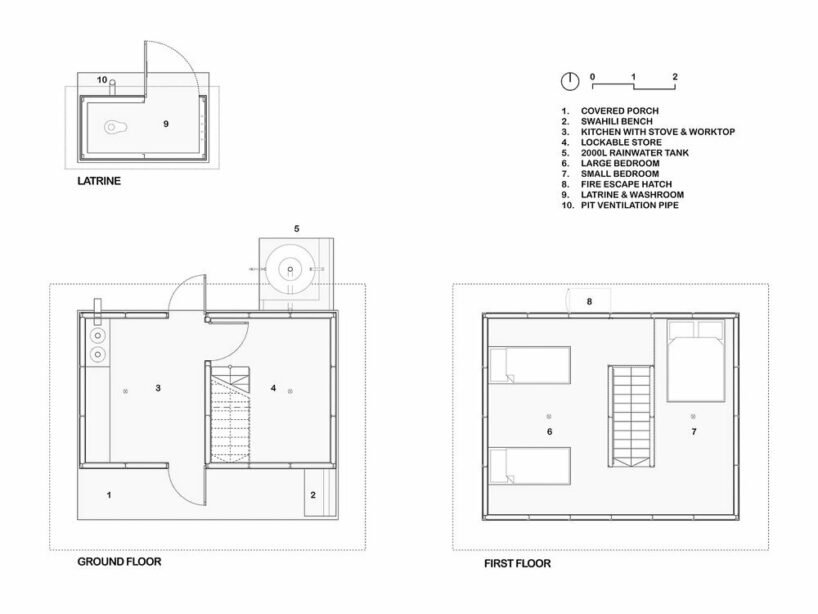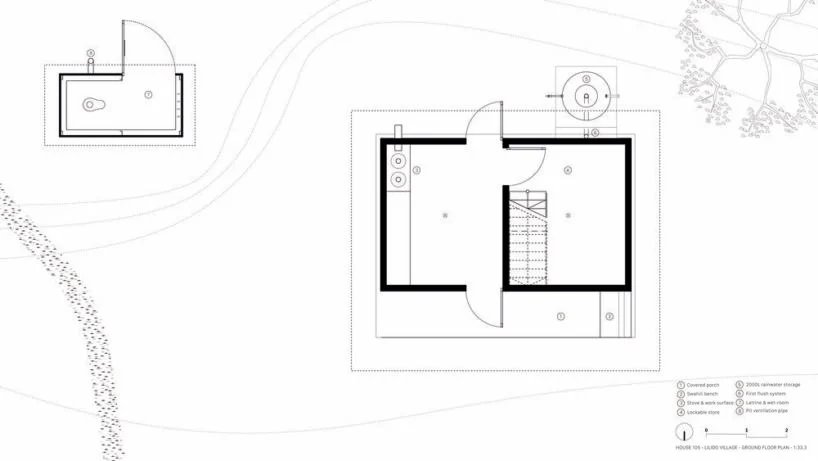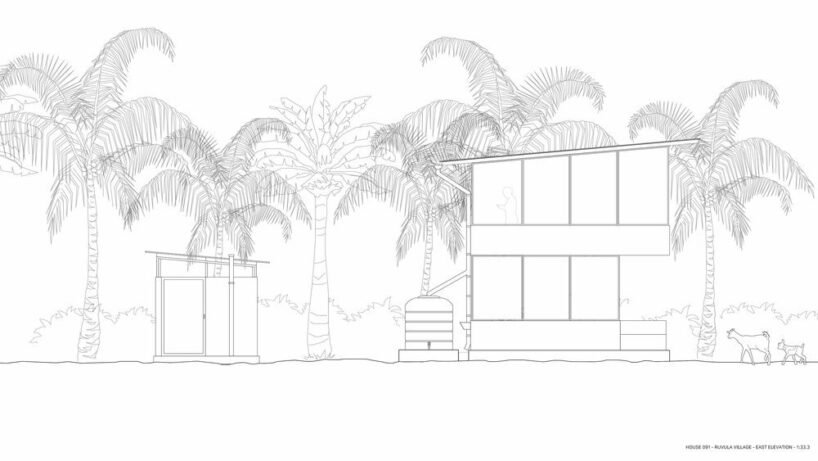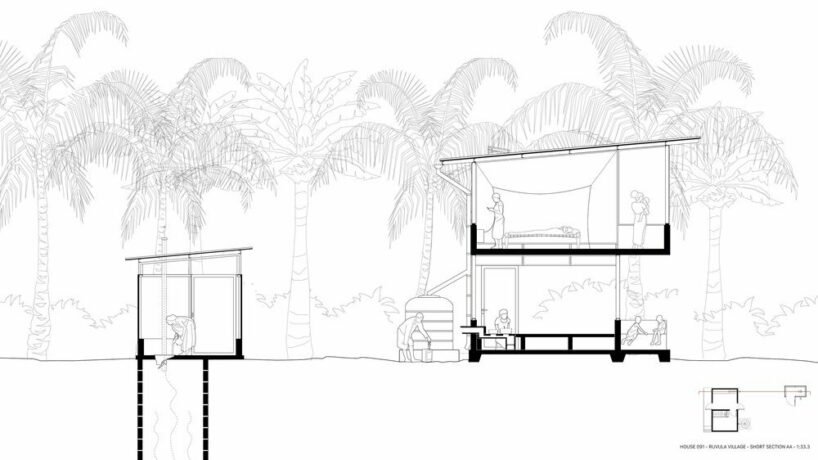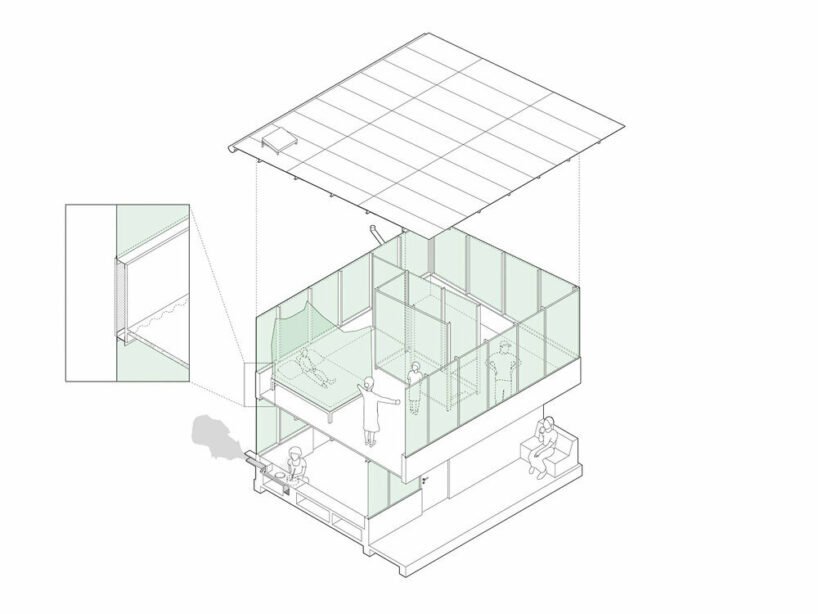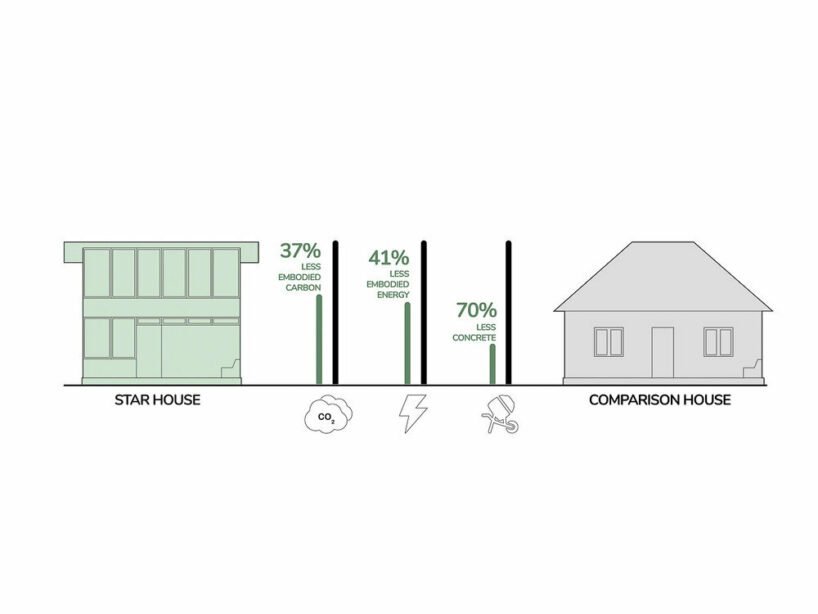ingvartsen architects build prototype house for Tanzania
Developed by a cross-disciplinary team of architects — led by Ingvartsen Arkitekter — physicians, scientists entomologists, and the local community, the Star Homes Project provides robust and affordable housing prototypes for a healthy future in Sub-Saharan African conditions. These regions are projected to have a population growth of 1.1 billion people by 2050, which will necessitate the construction of millions of new homes.
Unlike most single-level rural Tanzanian housing, Star Homes’prototype occupies two stories. The construction seeks to provide robustness, as many houses collapse due to the poor quality of their foundations during rainy seasons. Thus, each house is built on a raised concrete plinth, cast in a single pour to improve strength, and is backfilled with compacted earth, reducing the use of concrete.
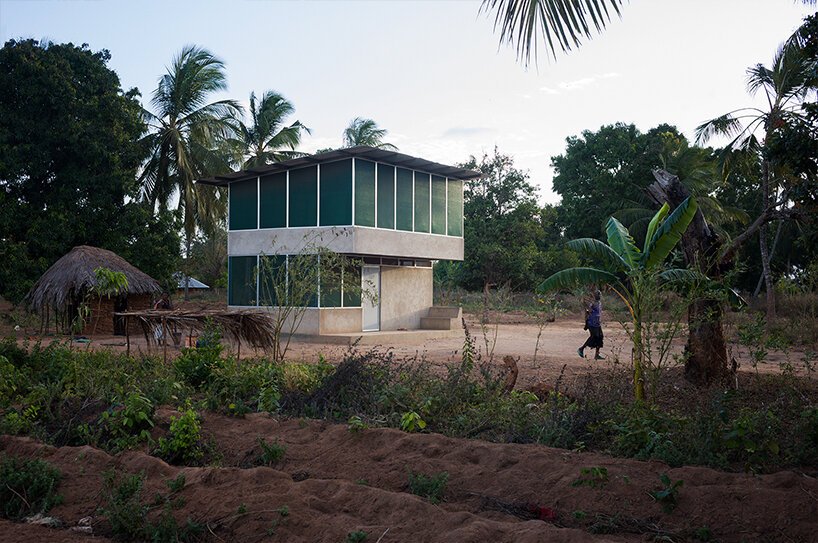
all images by Julien Lanoo
improved housing on family health in Tanzania
Proper ventilation is needed both for the house’s condition as well as for the residents’health. Thick walls, common to traditional housing, absorb heat during the day and radiate it into the home at night which reduces the use of bed nets and increases the risk of malaria transmission. Cooking inside without adequate ventilation causes respiratory tract infections, especially in children and women, and inadequate water supply and sanitation can result in enteric infections.
Taking its cues from the Magoda project and traditional homes in South-East Asia, the Star Homes (see more here) is well adapted to the hot-humid climate. The prototype by Ingvartsen Arkitekter (more here) seeks to reduce both the environmental impact and building cost of the housing, offering better healthy conditions for its residents, as well as teaching the community new construction skills.
Walls emerge solid but are in fact hollow, including two thin layers of cement rendered on wire mesh. A skeleton made of 0.75mm thick prefabricated light gauge steel members can be erected in under two days by a local team. The resulting structure utilizes 70% less concrete compared with a typical concrete block design and 40% less embodied energy.
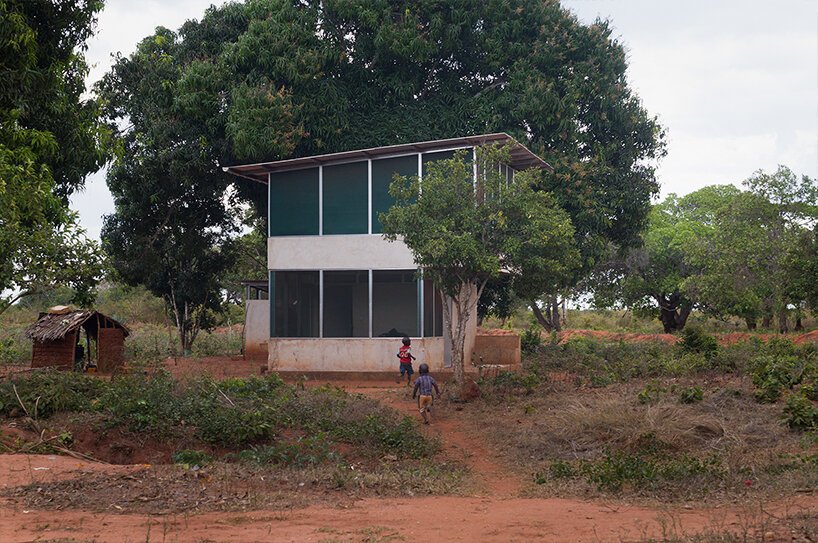
the star homes project explores low-cost, comfortable, and insect-proof housing
Regarding the interior, the team opted for breathable surfaces of netting to reduce indoor temperature and the entry of mosquitoes that can potentially carry diseases. On the ground level, the house accommodates a kitchen and storage area while the bedrooms are located on the upper floor. The latrine is positioned in a separate volume.
The design team utilized iterative parametric modeling and environmental simulation techniques, such as Computational Fluid Dynamics (CFD), to improve indoor comfort and the design of individual elements, like the smokeless stove. The exterior has built-in benches, while rainwater is collected from the roof and stored in a 2000L tank and through a first flush system, can provide free clean drinking water.

the design of the houses aims to reduce rates of malaria, respiratory tract infections, and enteric diseases
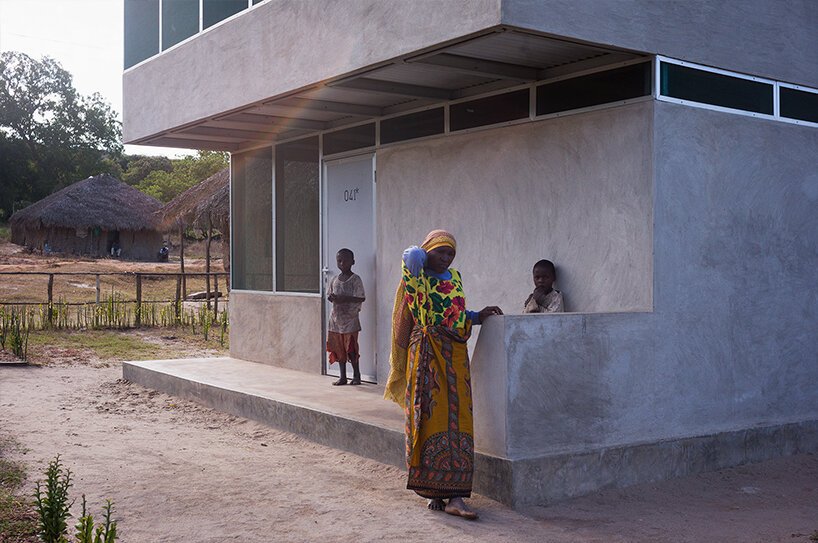
all materials have been sourced from within Tanzania and constructed by a local team
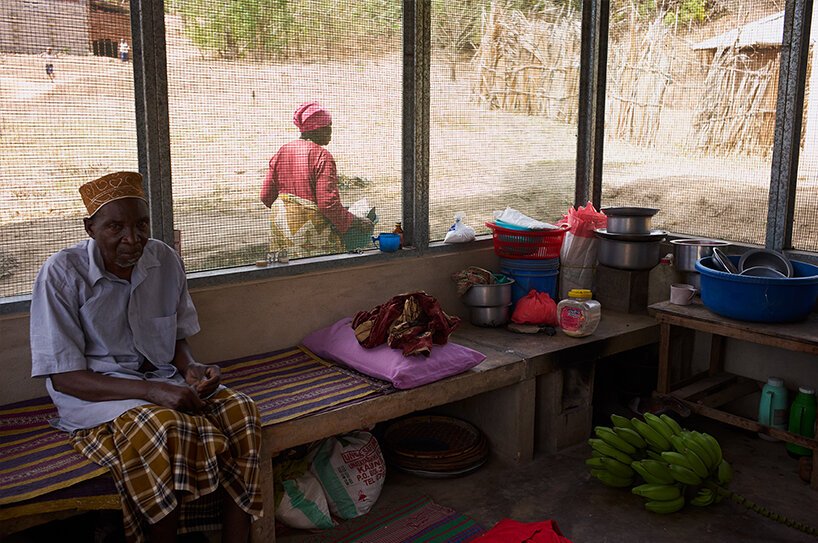
the team opted for breathable mesh surfaces to reduce indoor temperatures and the entry of mosquitoes
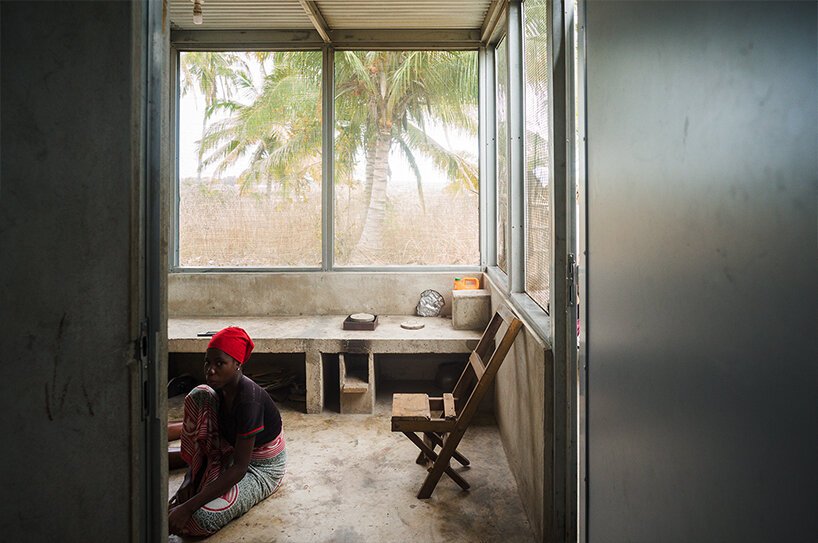
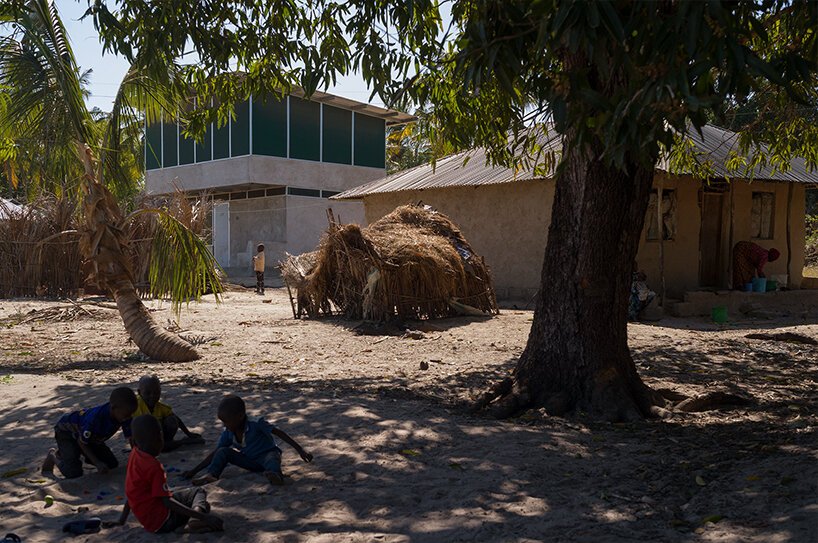
unlike most single-level rural Tanzanian housing, Star Homes’prototype spans two stories
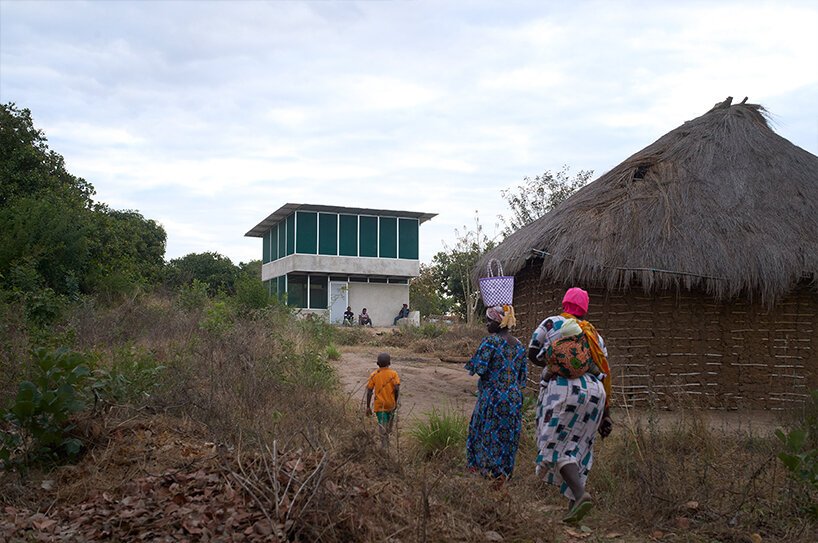
The Star Homes Project is part of the ADFÆRD / VELFÆRD exhibition at the Royal Danish Academy. An exhibition model, built on a 1:1 scale, showcases the architectural elements and health interventions of a Star Home, as well as the spaces inside the house. Constructed in wood instead of LGS, the model explores the possibility of adapting different building methods and materials with lower embodied carbon.
project info:
name: The Star Homes Project
location: MTWARA, Tanzania
photography: Julien Lanoo | @julienlanoo
team:
lead architect: Jakob Brandtberg Knudsen (Principial, Ingvartsen Architects. Dean. Architecture. Royal Danish Academy – Architecture, Design, Conservation)
clinical studies: Led by Lorenz von Seidlein (Professor, Mahidol Oxford Research Unit, Bangkok / University Oxford) and Salum Mshamu (Founder, CEO & Lead Consultant, CSK Research Solutions Ltd. Tanzania)
research team: Royal Danish Academy – Architecture, Design, Conservation



